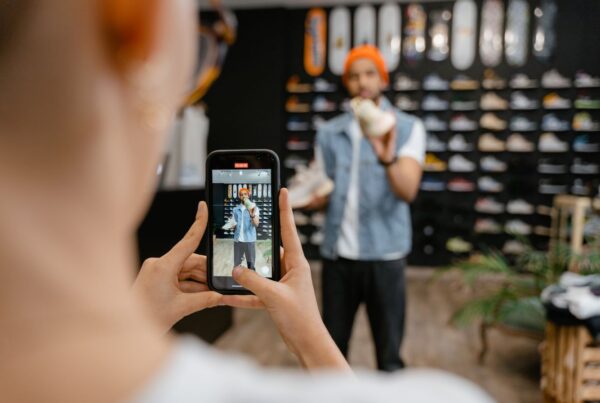Marketplaces vs Retail: focus on this power struggle
What if we’ve buried traditional points of sale too soon? Faced with the kind of stiff competition coming from the Web’s giant players and marketplaces that rely on data analytics, sales outlets have experienced, over time, a sharp drop in the volume of their visitors. On the other hand, e-commerce has proved increasingly buoyant, year after year, closing the gap with, and even outperforming, an ailing traditional retail industry.
Nevertheless, retailers are getting all prepped-up to reverse this trend, by considering new and inventive ways to tackle e-commerce head on. Digitization has become their preferred weapon of choice, to nurture the emergence of a smart phygital strategy that helps points of sale deliver an end-to-end, innovative customer experience. And the outcome is light visible at the end of the tunnel : in a country like France, 33% of consumers say that they initiate their buying journey with a search on the Internet, while 79% of them make their actual purchase in a physical store.
Retail: David vs. Goliath
After taking over Whole Food, Amazon has recently tied up a partnership with Monoprix to deliver food products in the area of Paris within 2 hours. For sure, the international brand has a powerful strike force. And for the French retailer this can be quite dreadful: Amazon has come to surpass local retail shops in their capacity to provide a proximity service. Overall, major web brands have proved their leadership online, but they have realized that being a “pure-player” is not enough to make them sustainable over the long run. To have several cards in hand, marketplaces now also rely on brick and mortar shops, as shown by Amazon, which has led the way by opening up its first retail store in Seattle (2017).
Yet, this powerful comeback of traditional points of sale is wholeheartedly welcomed by brick and mortar retailers who have suffered from the vibrant growth of e-commerce. But there are new stakes to it. The proven preference of consumers for physical stores, and their strong desire to see, feel and experience the product before buying it, provides points of sale with a true window for action. That is, provided retailers can renew themselves to better attract their target audience. The benefits delivered by retail outlets, although lacking in e-commerce, are not enough to retain crowds. Now, more than ever, business must leverage a multichannel journey that combines physical and digital experiences. For outlets, the user behavior clearly indicates the most appropriate strategy to strengthen their market position.
Fighting back through a smart phygital strategy
For retailers, the challenge is no longer to head straight for the same fate as Amazon, an undisputed leader. In this rather unbalanced tussle, if Goliath’s strength lies in the capacity to leverage data in combination with a tenuous sticking power in the field, David must rely on the customer’s in-store experience. By making points of sale smarter, proximity retailers can stand out to design, not only an innovative purchasing path, but also a powerful shopping experience.
Physical stores now leverage digital capacities to engage in a “smart phygital” strategy that leverages current technologies to design a modern experience in tune with the expectations of increasingly demanding consumers. This includes supporting consumers through tips, advices and a proximity-authentic relationship. The consumer and his sensorial experience form the cornerstone of this new strategy driven by digital innovation. Wi-Fi becomes key in delivering this next-generation experience as it helps retail shops regain ownership over their data to better understand their customers and target audience, increase visitor attendance, improve loyalty and, eventually, turn customers into brand advocates.
Marketplaces have increased their footprint since the advent of e-commerce. Yet, traditional retailing has not yet had its last word. Gradually, local shops are renewing their offering to survive: the fierce competition with the web giants urges them to rethink their business model and modernize their offering to remain relevant and keep attracting their customers. This increased competitiveness drives a true win-win situation: consumers benefit from the best possible service, while forward-thinking brands, like those that have embraced a phygital strategy, grab a competitive edge over others. As we all know, those who survive are not necessarily the strongest, but the fittest …








